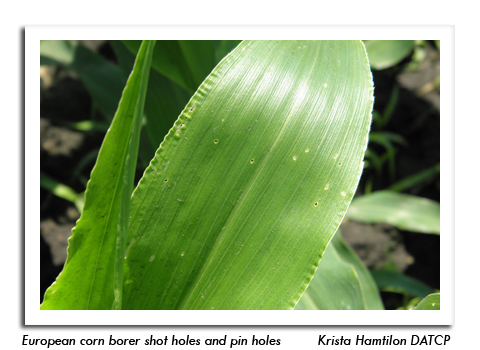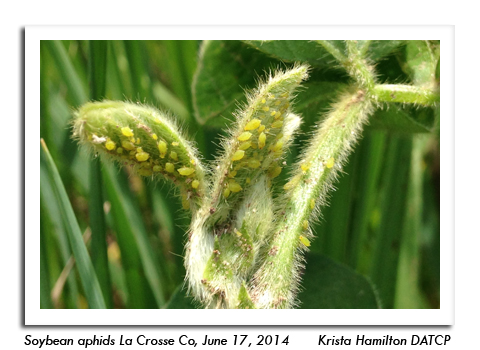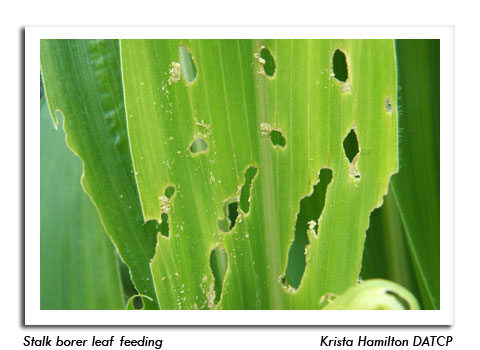
 |
|
|
Looking Ahead
Volume 59 Number 8 Date 06/19/2014 EUROPEAN CORN BORER - The most advanced corn is now susceptible to infestation by first generation corn borers. Leaf feeding and small larvae were observed during the past week on 2-4% of plants in Monroe and Vernon counties. Early signs of damage, including leaf pinholes and shot holes, should be noticeable in southern and central Wisconsin fields in the week ahead. TRUE ARMYWORM - Surveys indicate larval populations in corn remain below economically significant levels, but continued scouting for localized infestations is recommended. Many fields have an abundance of grassy weeds favorable for armyworm development and late herbicide treatments at these sites could force the larvae from the grasses onto corn plants. EASTERN TENT CATERPILLAR - Pupation has begun in advanced areas of southern Wisconsin with the accumulation of 725 degree days (base 50°F). The first moths may begin appearing at lights and in black light traps in the next two weeks. SOYBEAN APHID - Early colonies were observed for the first time this season on June 10 in Sauk County. Surveys this week detected aphids in 11 of 47 soybean fields sampled. Densities were low and ranged from 1-22 per infested plant on 2-18% of plants. The aphids were found in Dodge, Grant, Iowa, Jackson, La Crosse, Lafayette, Monroe and Vernon counties. POTATO LEAFHOPPER - Nymphs are appearing in alfalfa. Counts of this stage and the adults are still below the economic threshold of one per sweep in 8- to 11-inch fields and two per sweep for alfalfa 12 inches or taller, but reproduction could increase abruptly in response to the current warm weather. Systematic sampling of second-crop alfalfa is advised. STALK BORER - Migration of stalk borer larvae from grasses and broadleaf weed hosts into corn is expected to accelerate next week. Spot treatment may be warranted for fields that show 5% of plants with leaf feeding. Damage should become pronounced by late June or early July. APPLE MAGGOT - Fly emergence could begin by June 24 near Beloit, June 29 near La Crosse, and July 9 near Racine. This event corresponds with the accumulation of 900 degree days (base 50°F) in most years. Traps should be placed next week in perimeter trees adjacent to abandoned orchards or woodlots to capture the earliest emerging flies. WESTERN BEAN CUTWORM - Pheromone traps are now being set in preparation for the annual moth flight. Participants in the western bean cutworm monitoring program should begin reporting counts to Tracy Schilder at tracy.schilder@wisconsin.gov by June 25 and each Wednesday during the nine-week trapping survey. -- Krista Hamilton, DATCP Entomologist 





|
|
|